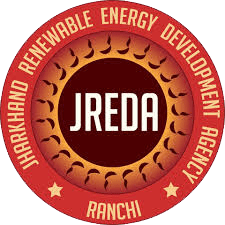
Jharkhand Renewable Energy Development Agency
State Govt Agency under Department of Energy


Energy Efficiency and Conservation (including DSM)
Interest subsidy is currently not offered by Government of India except for Technology Upgradation Fund scheme for Textile sector, where JREDA is also a member institution.
JREDA also offers grant schemes linked to the loan availed by it for conducting energy audits, preparation of DPR etc. (see the financing guidelines for further details).
No. Energy saving measures in plants based on both fossil fuels as well as renewable fuels are eligible for eligible for JREDA financing.
No. However, it is always better to employ the energy auditors accredited by other agencies such as Bureau of Energy Efficiency, PCRA etc.
Yes (Except for the cases where established energy saving items such as CFL/T5 lamps etc. are being proposed.)
No. Any other equipment/ device/ system, which contributes to energy saving shall be considered by JREDA for financing.
JREDA finances the end user energy efficiency retrofit projects, DSM Projects taken up by utilities, projects promoted by Energy Service Companies (ESCOs) and power plants based on recovery of energy from exhaust gasses. JREDA also extend line of credits to financial intermediaries to onlend/ lease the energy saving equipment.
Active or efficient in-house management of energy efficiency through maintenance and housekeeping measures involves no or only very minimal investments. Replacement/Retrofit of selected equipment, which may require medium-size investments can be taken up; and The third and final type may be the Process Revamping or modification of entire manufacturing processes, which may require large-scale investments.
A company that offers to reduce a clients energy costs, often with the cost savings being split with the client through an energy performance contract (EPC) or a shared-savings agreement.
The energy efficiency/ conservation measure can be applied at Supply Side (viz. at the point of generation of power) as well as at Demand Side (viz. at the point where the energy is consumed). However, in view of various transmission/ distribution losses involved till the energy reaches to end user, it has been found that the Demand Side Management (DSM) is more effective than the Supply Side Management. DSM initiatives are also helpful in flatten the demand curve of utilities and thus reducing the need for peak power generators.
In case of energy conservation, the main technology of the device or equipment remain unchanged however energy wastage is minimized by plugging the unproductive use of energy. This will also result in improving overall energy efficiency of the system. For example, we take the same case of incandescent lamp but incorporate the movement sensor or dusk to dawn timer to regulate the use of light only when it is required, it will result in conservation of energy.
When the specific energy consumption (units of energy consumed per unit of output) of a device or equipment is improved by changing the technology deployed, it is termed as improving the energy efficiency. For example, if we change the incandescent lamp by a Compact Fluorescent Lamp (CFL), it will result in same illumination level with less power consumption. Thus, this is a case of improving energy efficiency.
You are visitor no: 19412
Last Updated on: 19-04-2024 23:12:12